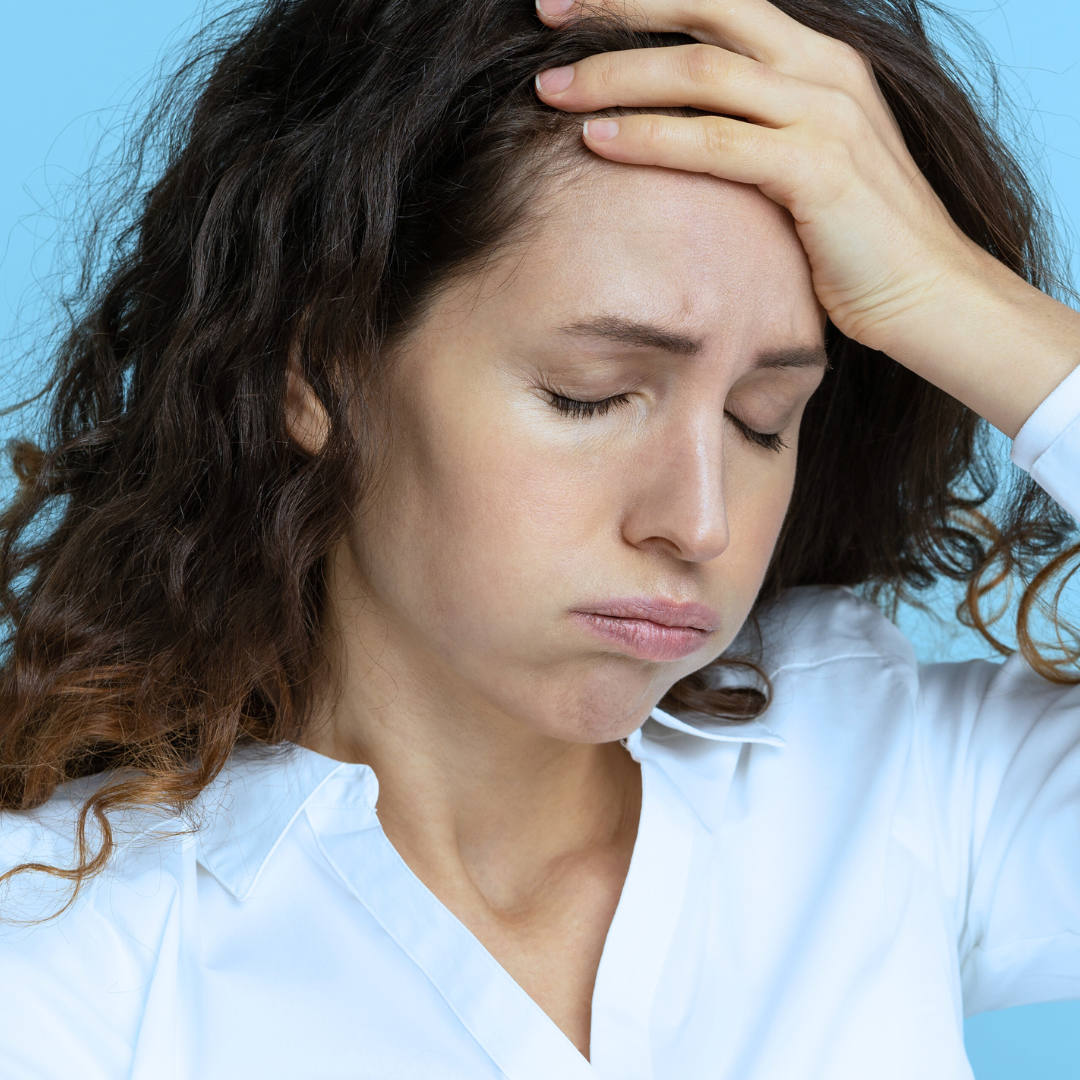If you’re in your 40s and noticing new or worsening headaches, particularly around your period, you’re not imagining it. Headaches—especially migraines—often change during perimenopause, the transitional phase leading up to menopause.
Understanding the different types of headaches, their causes, and how to manage them can make a significant difference to quality of life.
Headache vs migraine: what’s the difference?
A headache is a general term for pain in the head or neck. It may feel dull or sharp, affect one or both sides, and last from minutes to days.
A migraine, on the other hand, is a neurological condition. It typically involves:
- Moderate to severe throbbing pain, often on one side of the head
- Nausea and/or vomiting
- Sensitivity to light and sound
- Can last 4 to 72 hours if untreated.
What is migraine with aura?
Some people experience warning symptoms called an aura before a migraine begins. Auras are temporary neurological symptoms that may include visual disturbances such as flashing lights, zigzags or blind spots, numbness or tingling on one side of the body, difficulty speaking or finding words.
Migraine with aura is clinically important because it carries a small increased risk of stroke. For this reason, certain hormone treatments are not considered safe in women with this type of migraine.
During perimenopause, headaches can be grouped into three main categories:
1. Hormonal headaches
These are closely linked to the menstrual cycle and triggered by fluctuations in oestrogen levels—especially the drop that occurs just before a period. They typically occur two to three days before menstruation and/or during the first three days of bleeding.
Women who experienced menstrual migraines earlier in life may notice a return or worsening of symptoms during perimenopause due to more erratic hormone levels.
2. Non-hormonal headaches
These headaches are not connected to the cycle and can have various triggers, such as stress, poor sleep, caffeine or alcohol; dehydration; neck or muscular tension.
They can include tension-type headaches or be part of chronic migraine syndromes.
3. Mixed headaches
Many women experience a combination of hormonal and non-hormonal factors. For example, a hormonally timed migraine might be made worse by poor sleep or emotional stress or headaches may occur both linked and not linked with the period. These headaches require a more tailored management plan.
The Role of Hormones in Managing Migraine
The Combined Oral Contraceptive Pill (COCP) can be helpful in perimenopause by:
- Suppressing ovulation and reducing hormonal fluctuations
- Providing steady levels of synthetic oestrogen and progestogen
- Helping with cycle regulation and other perimenopausal symptoms.
For migraine management where aura is not present, the COCP can be taken continuously (skipping the sugar pills) to avoid the oestrogen withdrawal that commonly triggers migraines.
The COCP is generally not recommended for women who experience migraine with aura, due to the small but important risk of ischaemic stroke. This risk is higher if other factors like smoking or high blood pressure are also present.
For women with migraine with aura or other risk factors, transdermal oestrogen (patch or gel) as part of MHT or as a supportive therapy when using progestogen only pills, is a safer option. This route avoids first-pass metabolism in the liver and is less likely to impact clotting.
Transdermal oestrogen can be used with a separate progestogen (such as a Mirena IUD or oral progesterone) to protect the uterus. These combinations are often used as part of Menopausal Hormone Therapy (MHT), especially after periods have stopped.
Other Migraine Management Options
Migraine treatments that remain relevant during perimenopause include:
Acute treatments – triptans, anti-inflammatories (e.g. ibuprofen or naproxen), anti-nausea medications.
Preventive treatments – beta blockers, amitriptyline, topiramate, CGRP inhibitors (a newer class of medication).
Non-pharmacological options – stress reduction and regular sleep, adequate hydration and balanced meals, avoiding known triggers like alcohol or certain foods, cognitive behavioural therapy (CBT) and mindfulness.
What Happens After Menopause?
Once menopause occurs and hormone levels stabilise at low levels, many women find their migraines improve or resolve entirely. However, this isn’t universal—some women continue to experience headaches or develop new triggers unrelated to hormones, especially if their migraine pattern was non-hormonal.
At this stage, treatments may shift focus from hormone regulation to long-term migraine prevention or management of other contributing factors.
Headaches and migraines during perimenopause are common, but they can be distressing, disruptive and under-recognised. Identifying whether your headaches are hormonal, non-hormonal or a mix of both is helpful to guiding treatment.
Hormone therapy, if appropriate and safe, may play a role—but it’s not the only option. A personalised approach that considers your headache type, risk factors, and lifestyle is the best way forward.






